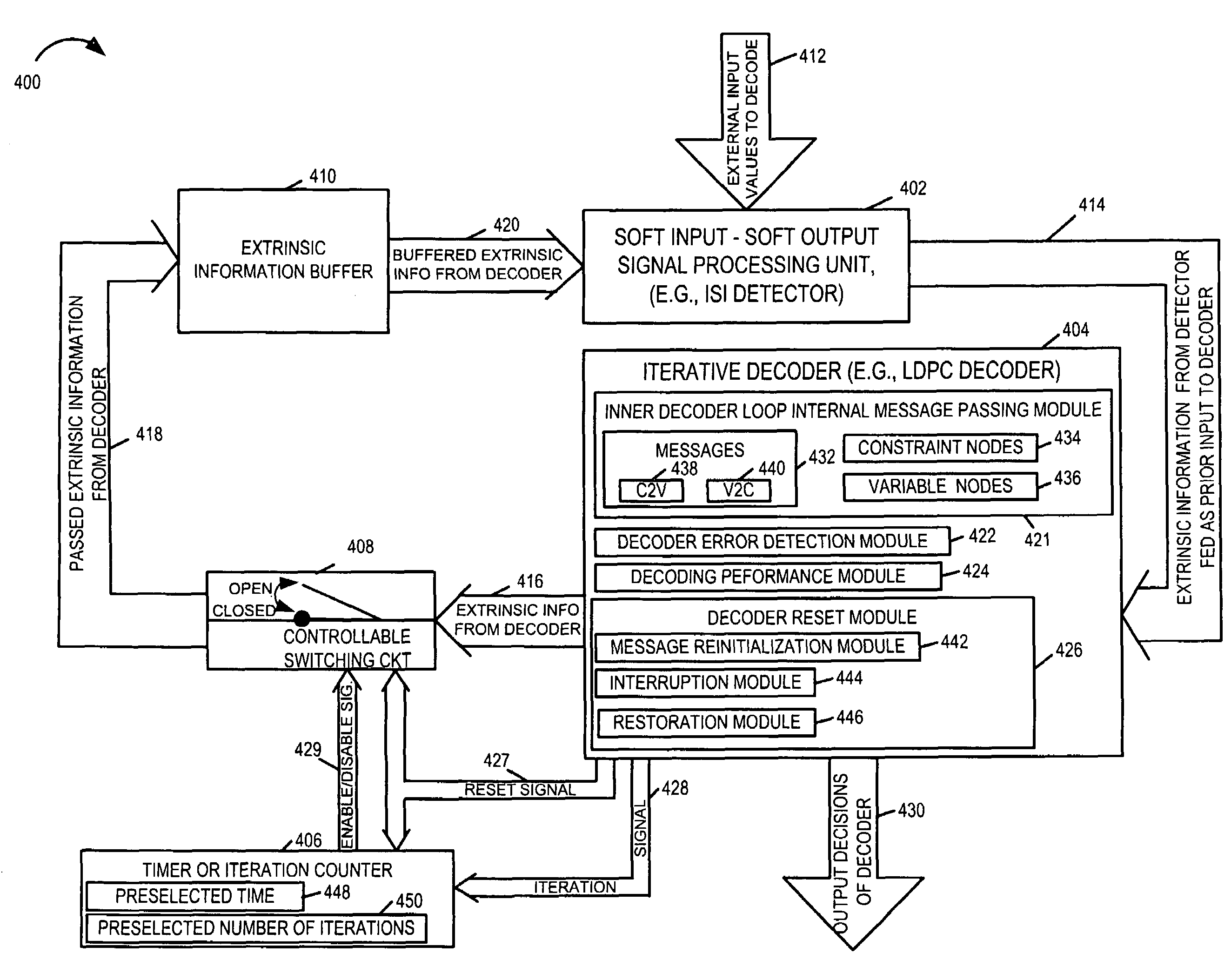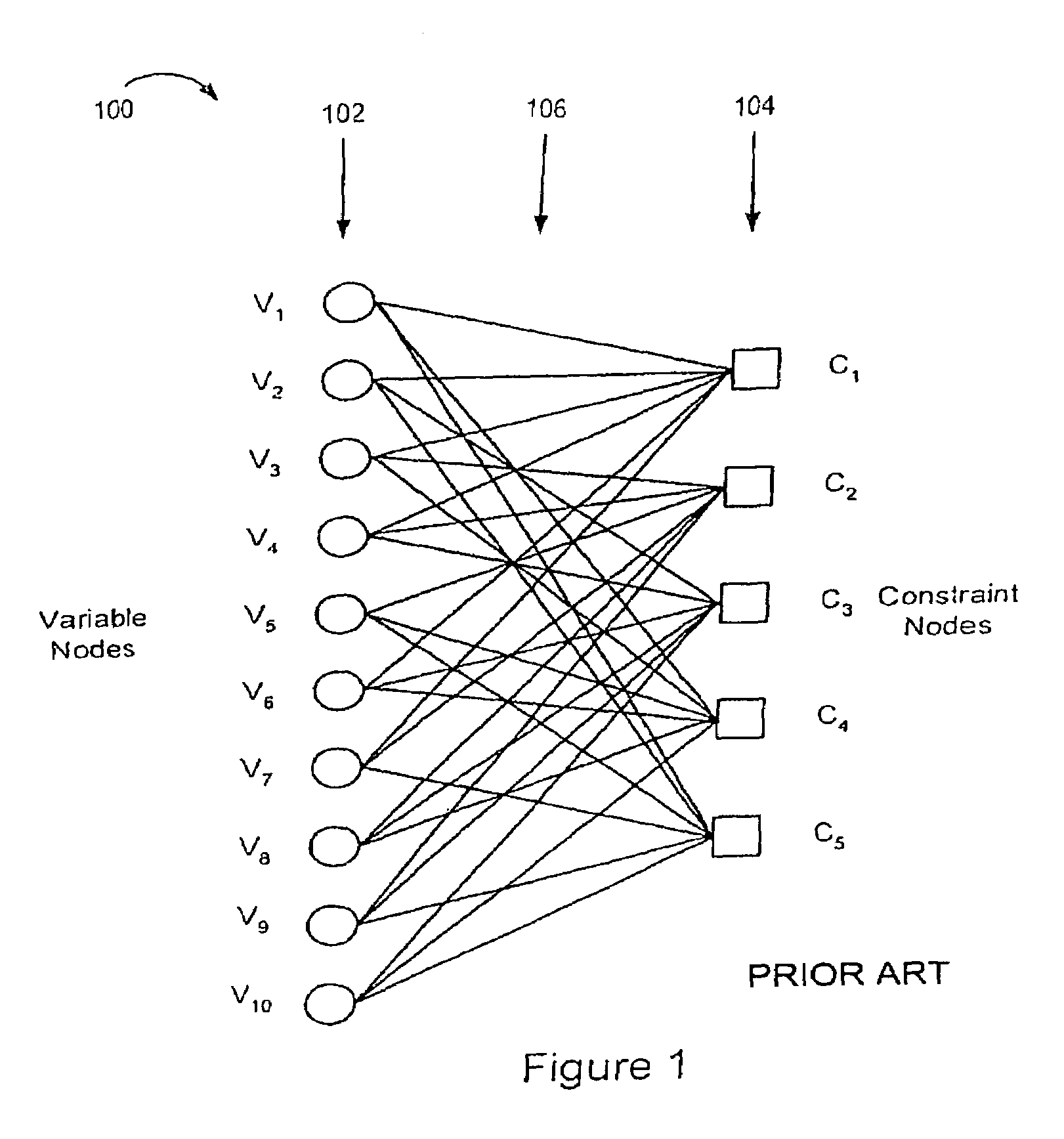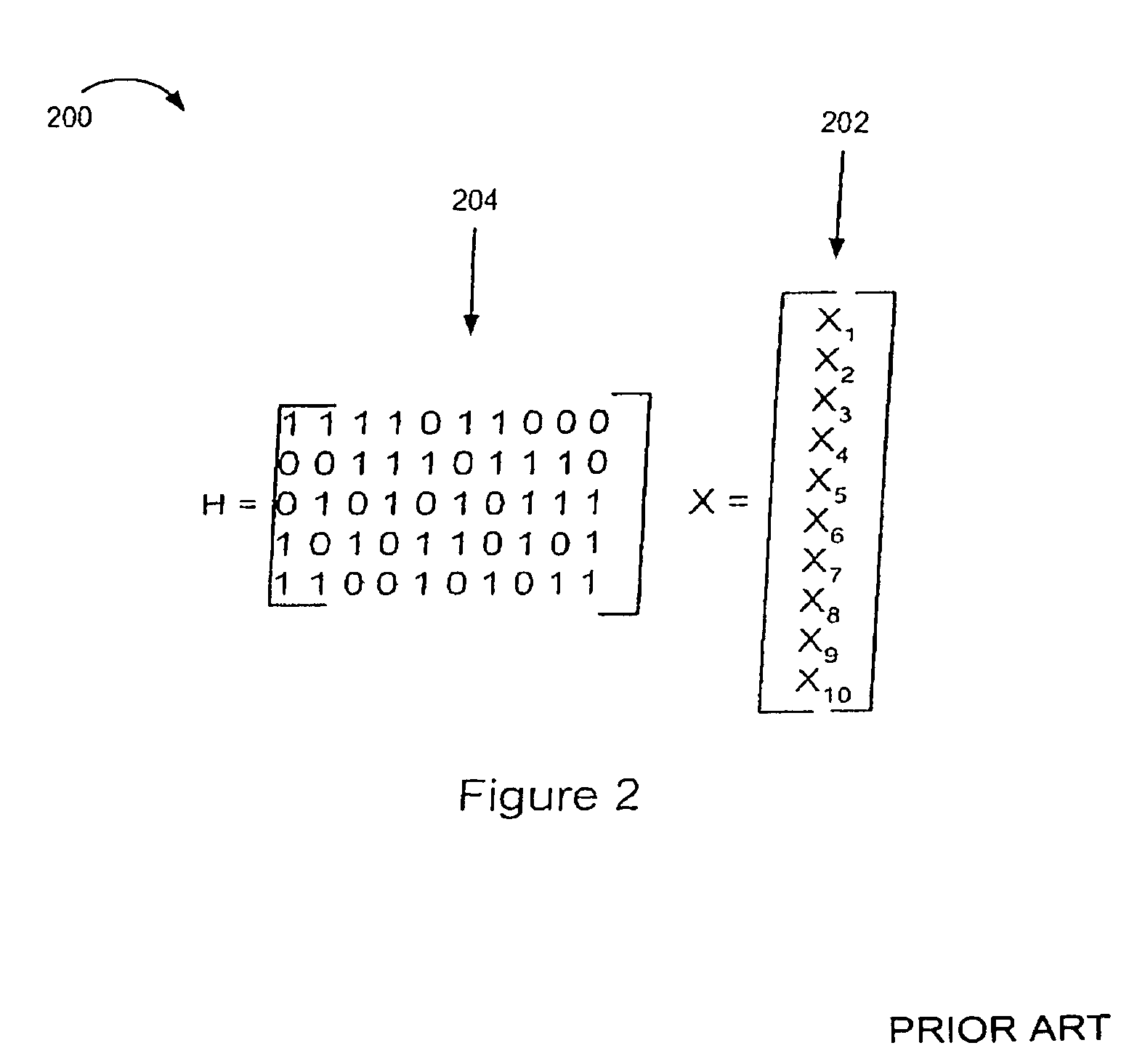Methods and apparatus for reducing error floors in message passing decoders
a message passing decoder and error floor technology, applied in the field of message passing decoding methods and apparatuses, can solve the problems of soft information values that cannot be realized by the decoder, the message passing decoder may become trapped in a bad state, etc., and achieve the effect of reducing the minimum number of errors
- Summary
- Abstract
- Description
- Claims
- Application Information
AI Technical Summary
Benefits of technology
Problems solved by technology
Method used
Image
Examples
Embodiment Construction
[0052]As will be discussed below, the present invention applies to a wide range of LDPC decoding systems as well as other types of message passing decoding systems, e.g., Turbo code decoders.
[0053]The current invention is directed to, among other things, methods and apparatus that provide a simple mechanism for improving the performance of a decoder system including a decoder such as an LDPC decoder or a turbo decoder in conjunction with a soft input-soft output signal processing unit such as a soft detector, e.g. an ISI detector. An improvement provided by the invention may be realized as an error floor reduction, e.g., an improvement in the error rate performance, e.g., at relatively low error rates. The present invention arises from an insight into the nature of error floor events in message passing decoders, e.g., LDPC decoders and other similar decoders. It was realized that in such decoders the failure can occur as a result of the sub-optimal message-passing nature of the deco...
PUM
 Login to View More
Login to View More Abstract
Description
Claims
Application Information
 Login to View More
Login to View More - R&D
- Intellectual Property
- Life Sciences
- Materials
- Tech Scout
- Unparalleled Data Quality
- Higher Quality Content
- 60% Fewer Hallucinations
Browse by: Latest US Patents, China's latest patents, Technical Efficacy Thesaurus, Application Domain, Technology Topic, Popular Technical Reports.
© 2025 PatSnap. All rights reserved.Legal|Privacy policy|Modern Slavery Act Transparency Statement|Sitemap|About US| Contact US: help@patsnap.com



